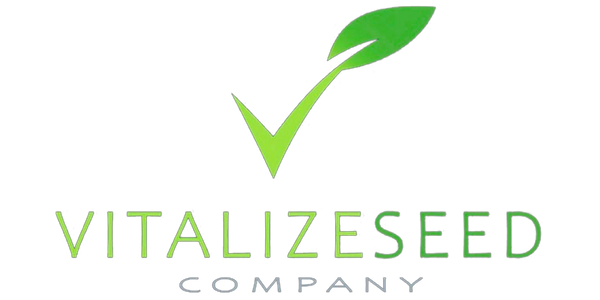
REGEN N™: Smarter Foliar Nitrogen for Healthier, Tastier Crops
Share
Why Vitalize REGEN N™ Is a Game-Changer for Foliar Feeding and Planting-Time Applications
In today’s competitive agriculture landscape, growers need smarter nitrogen strategies—ones that work with the plant, not against it. Traditional nitrogen sources, such as urea and ammonium nitrate, often fall short when used in foliar or at-planting applications due to conversion stress, plant burn risk, volatilization, and other factors.
That’s where Vitalize REGEN N™ stands out. Powered by amino-acid-based nitrogen and enriched with natural sugars, calcium, and humic compounds, it delivers fast, safe, and biologically intelligent nitrogen nutrition.
What Makes REGEN N Unique?
- Amino Acid-Based Nitrogen – Already in the form plants need. No conversion required, so it’s rapidly absorbed and used.
- Non-Burning & Plant-Safe – Safe even under stress (drought, transplant, heat).
- Complete Nutrient Support – Includes natural sugars, calcium, humic/fulvic acids, sea minerals, and more.
- High Efficiency, Low Application Rate – Just 2 oz/gallon of water required. 1-gallon treats up to 6.5 acres at a 10-gallon-per-acre spray volume. Because the N is rapidly available, plants need less. If using more than 12 gallons per acre, use 1/2-1qt per acre.
Scientific Research Supporting Amino-Acid N
Nitrate reductase is a key enzyme that converts nitrate (NO₃⁻) to nitrite (NO₂⁻), enabling plants to access and use soil nitrate efficiently. This conversion is the first essential step in the full nitrogen assimilation pathway that ultimately results in amino acid and then protein formation. While nitrate reductase does not directly metabolize amino acids, amino acid-based sprays like REGEN N have been shown to stimulate its activity—accelerating the plant’s ability to metabolize nitrate and enhancing its overall nitrogen use efficiency. This contributes meaningfully to downstream protein synthesis and overall plant growth and health.
Visualizing Nitrogen Pathways in Plants
Synthetic Nitrogen (e.g., urea, nitrate):
- Absorbed by roots or leaves
- Converted (via enzymes like urease or nitrate reductase)
- Transformed to ammonium
- Converted to amino acids
- Assembled into plant proteins
Amino Acid-Based Nitrogen (REGEN N):
- Absorbed by roots or leaves
- Already in amino acid form
- Immediately available for protein synthesis
Conclusion:
Amino acid nitrogen is halfway through the metabolic pathway upon entry, bypassing two energy-intensive conversion steps. This reduction in metabolic burden enhances total nitrogen use efficiency and accelerates the formation of plant proteins. By eliminating these conversion steps, REGEN N helps plants allocate more energy to growth and stress resilience—resulting in healthier, more productive crops.
Additionally, amino acid nitrogen contributes to increased sugar and phenolic compound content, improving plant palatability. This makes treated forage crops—such as brassicas and clovers—more attractive to wildlife like whitetail deer, an added benefit for food plots and conservation-focused growers.
Stress Tolerance
Proline and glycine betaine—amino acids commonly found in biostimulants—have been demonstrated to enhance drought, heat, and salinity resistance by balancing osmotic pressure and activating antioxidant pathways (Springer, 2024).
Increased Yield and Nutritional Quality
Research indicates that foliar sprays containing amino acids enhance nutrient uptake and improve yield components (e.g., pod number in soybeans), as well as secondary metabolites such as phenolics and flavonoids in vegetables, thereby improving quality and flavor (ScienceDirect, 2023).
Superior Uptake
Studies comparing foliar-applied urea and amino acids show that while urea is quickly taken up, amino acids offer a slower but more sustained absorption and signal-driven benefit for long-term metabolic health (USDA Forest Service, 2019).
Pairs Seamlessly With Your Existing Program
- Vitalize Bio-Charge™: REGEN N provides sugars and amino acids that fuel microbial populations activated by Bio-Charge.
- REVIVE RX: Used together, REGEN N supports enzymatic activity and soil residue cycling after harvest.
- Tank Mix Compatibility: Works with most micronutrient sprays, biologicals, and in-furrow products.
Use Cases & Rates
| Use-Case | Benefit | Rate/Acres |
|---|---|---|
| In-furrow at planting | Early root support, stress reduction | 2–4 oz/acre |
| Foliar during veg stages | Rapid greening, growth stimulation | 2–3 oz/gallon |
| With microbial products | Microbial food source, synergistic boost | 2–4 oz/acre |
| Post-stress recovery | Improved rebound and enzyme activity | 2–4 oz/acre |
REGEN N is highly versatile and can be used across many systems, including:
- Food plots and wildlife blends (e.g., brassicas, clovers, NitroBoost, Carbon Load)
- Cover crops
- Garden vegetables and fruits
- Lawns and turf
- Row crop agriculture (corn, soybeans, wheat)
The Takeaway
REGEN N isn’t just nitrogen. It’s intelligent nitrogen.
It activates enzymes, boosts stress resilience, enhances palatability for wildlife, supports microbial life, and integrates cleanly into regenerative systems. Backed by peer-reviewed research and proven in the field, Vitalize REGEN N™ is your go-to tool for efficient, safe, and high-performing nitrogen nutrition.
Don’t Take Our Word for It — Here’s the Science:
These studies confirm that amino acid-based foliar nutrition offers more than just a nitrogen source—it drives real improvements in plant metabolism, stress tolerance, and productivity.
-
Ertani, A., Pizzeghello, D., Altissimo, A., & Nardi, S. (2013). Use of amino acid-based biostimulants to enhance plant nitrogen metabolism. Journal of Plant Nutrition and Soil Science, 176(4), 548-558.
-
Gálvez, A., Gómez-Miguel, V., & Zamarreno, A. M. (2020). Effects of foliar application of amino acids on lettuce and tomato. Journal of Plant Nutrition, 43(12), 1747–1762.
-
Batista, B. L., et al. (2018). Enhanced enzymatic activity and biomass in soybean using foliar-applied amino acid blends. Frontiers in Plant Science, 9, 396.
-
Gagné, J., et al. (2019). Comparative foliar nitrogen uptake: Urea vs. amino acid absorption. USDA Forest Service Research, 1–20.
-
Khan, W., et al. (2019). Role of proline and glycine betaine in abiotic stress tolerance. Plant Stress Biology, Springer.
- 6. OpenAI. (2025). General synthesis of peer-reviewed research on amino acid nitrogen metabolism, nitrate reductase activity, and foliar biostimulants. Retrieved through AI-assisted literature review using ChatGPT (v4).
